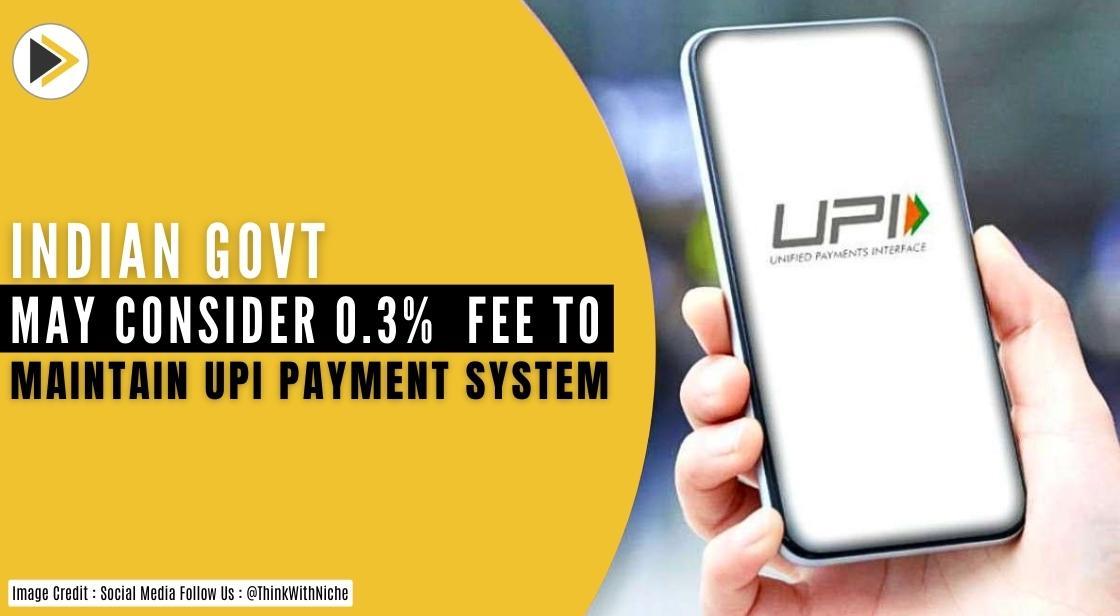Indian Govt May Consider 0.3% Fee To Maintain UPI Payment System

News Synopsis
According to an IIT Bombay study, the government should consider charging a 0.3 percent standard digital payment facilitation charge to support the infrastructure needed for such transactions and to assure the financial viability of the UPI payment system.
According to the study titled 'Charges for PPI-based UPI payments—The Deception'. a 0.3% facilitation charge may produce roughly Rs 5,000 crore in 2023-24.
The report, which examines the impact of the National Payments Corporation of India's (NPCI) decision to levy an interchange charge on mobile wallet purchases, claimed that merchants' payments should be 'unpolluted,' whether they come via UPI directly or through prepaid e-wallets.
With effect from April 1, 2023, the NPCI imposed an interchange charge of 1.1% on transaction amount for using prepaid payment instruments to make payments to merchants using UPI. This will apply to UPI merchant transactions made with prepaid wallets.
Rather than shifting operational costs to merchants and generating a discrepancy, they should be absorbed by the prepaid wallet user, avoiding a scenario comparable to passive smoking.
This keeps all UPI-based payments received by merchants clean and free of merchant discount rate (MDR).
The lack of an upfront payment-surcharge, according to the IIT Bombay Technical Study, would result in an overall rise in the selling price for everybody, including those who pay via plain vanilla UPI (normal UPI). As a consequence, the merchant's business costs will rise.
In light of this, the report proposed imposing a 0.3 percent facilitation tax on digital payments, which could generate up to Rs 5,000 crore in fiscal 2023-24.
But, under current law, no bank or system provider that operates UPI (unified payments interface) shall levy any charge, whether directly or indirectly, on a person making or receiving a payment using UPI as a form of payment.
As of now, bank account transactions and payments on the same wallet are free. On several occasions, banks and system providers attempted to construe the UPI-Law in their favor.
According to the report, payment system players are exploiting merchants and all customers by adding an unnecessary layer of expense to the pure payment system that exists in plain vanilla UPI.
According to the report, the push for prepaid wallet merchant discount rate (MDR) on merchants is so strong that it has become much easier for merchants to succumb to the same and continue with their focused business prospects by considering such costs as overheads (thus building the same into the selling price).
This automatically boosts the purchasing price for all customers, further harming them as they share the complicated cost of such payment system extravaganza, it noted.
In her 2018 Budget address, Finance Minister Nirmala Sitharaman stated that "the economy has become a lot more formalised as reflected in the EPFO membership more than doubling to 27 crore, and 7,400 crore digital payments of Rs 126 lakh crore through UPI in 2022".
According to Ashish Das's report, the government and RBI have borne enormous expenditures associated with currency printing and management.
They have spent an estimated Rs 5,400 crore per year on currency production alone in recent years, with many more spent on currency management.
The spending on UPI may be substantially lower and may even reduce the expenditure on currency, it said, adding that a decrease in cash-cost burden must be channeled in part to developing the UPI ecosystem.
Moving toward a solution, it stated that, just as the RBI accounts for the cost of currency creation and administration, it should likewise account for the expenses involved with managing the P2P and offline P2M UPI infrastructure.
You May Like









